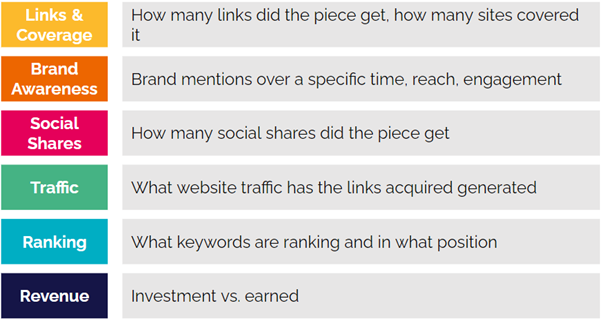Links are important for organic search. It’s the third pillar holding up a strong organic performance. No matter how good your on-page SEO is and how well optimised your website’s content is, you need backlinks to improve rankings and authority.
Why you should focus on the value, not quantity, of backlinks
How do you currently report on backlink growth? How do you measure your link acquisition? Many of our client prospects ask us about the number of links we can acquire for them, when they should be asking us what the value of the links we’ll acquire will deliver.
Sure, an easy way to report on backlinks is by the number. In a straightforward Excel sheet for example, including information such as the Domain Authority the website they’re coming from has and whether the link is followed or no followed. There’s nothing wrong with this, but there is so much more value of backlinks worth reporting on.
First, let’s look at the difference in types of backlinks and iron out what each mean from an organic search perspective.
Followed links vs no followed links
Followed links
Followed links has a direct benefit to your organic search performance. PageRank which increases a websites authority is only transferred via followed links. Followed links passes Page Rank, and traffic.
No followed links
No followed links looks the same as followed links on a web page, you can only see the difference in the HTML code. For organic performance, no followed links do not transfer PageRank, but they bring traffic.
![]()
Having a mix of followed and no followed backlinks to your website is healthy. A website with only followed links is a warning sign something isn’t quite right. You ideally want between 60-90% of followed links and the rest should be no followed. Out of the backlinks we acquire for our clients, we tend to see that 60% of them are followed.
![]()
Affiliate links
Affiliate links include the affiliate’s ID or username in the URL. Affiliate links are used to track the traffic they bring, in exchange for products or services.
![]()
Search Engines see affiliate links as paid links, so they don’t have any SEO benefits, but they do bring brand exposure and potentially direct traffic. Unless there’s lots of them, they’re not harmful for organic performance.
Now to the good part, how you should be reporting on backlinks.
How to report on backlinks
The way we report on backlinks depends on the KPIs set when working with a client.
Typically, we report on the number of links we’ve acquired and what type they are (followed, no followed and/or affiliates), as well as including the reach, visibility, uplift in rankings and traffic that they have achieved. We share how many people have seen the article we’ve placed the client in as these are all potential customers. We also share how the number of links we’ve acquired has supported keyword rankings the client is tracking.

We speak in currency with our clients. It is a number they understand and want to see. We focus on how the backlinks has affected their organic performance - keyword uplift and traffic - and show the monetary result it’s given. The more you can translate links into money, clients will understand the value and need of backlinks better.
If you’d like to chat to our experts about organic search and how you can implement this into your marketing budgets, contact us now.
Photo by Nathana Rebouças on Unsplash

















